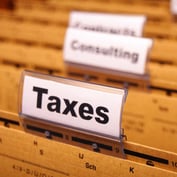What You Need to Know
- Here's what the derailing of President Joe Biden’s $1.75 trillion spending plan, and other factors, mean for GDP growth in 2022.
The U.S. economy will spend 2022 learning to live with the coronavirus without much in the way of help from the Federal Reserve or the federal government — especially with the derailing of President Joe Biden’s $1.75 trillion spending plan.
The Fed’s pivot last week toward tighter credit — ending its emergency bond-buying program in March to pave the way for higher interest rates — comes on top of a rollback in government spending programs put in place at the height of the pandemic.
The fiscal squeeze will be even bigger if Democrats cannot salvage Biden’s social-spending package in the face of opposition from a key moderate senator.

The result, economists say: A policy-induced slowdown in a hard-charging economy that’s ending 2021 on a very strong note, with fourth-quarter growth that could clock in at 7% or more.
The good news is that should help take the edge off inflation running at a multi-decade high.
The bad news: It will leave the economy more vulnerable to shocks such as the highly transmissible omicron variant that’s already prompting some pullback in U.S. economic activity.
Omicron “is going to wreak some havoc with the economy” as consumers hold back on spending on travel, restaurants and other face-to-face services, said Wendy Edelberg, director of the Brookings Institution’s Hamilton Project. She stressed, though, that she doesn’t expect the expansion to stall out.
That will all put a premium on Fed Chair Jerome Powell and his colleagues being nimble and not necessarily sticking with their projections of three interest-rate hikes next year as they seek to engineer a soft landing of the economy.
“There are so many variables and uncertainties,” said Mark Zandi, chief economist at Moody’s Analytics. “It’s like landing the economic plane on the tarmac in a storm that at points has a 100-mile-an-hour headwind and at other points a 100-mile-an-hour tailwind.”

In a research note on Sunday, Goldman Sachs Group Inc. economists said a failure to pass Biden’s social and environmental spending program “would introduce some risk” to their forecast that the Fed will deliver its first rate increase in March.
With passage of the plan looking increasingly unlikely, the Goldman economists lowered their forecasts for growth in the coming months, including chopping their first quarter estimate to 2% from 3%.
Equity futures dropped on the weaker outlook for fiscal support, along with concerns about omicron. Contracts on the S&P 500 Index were down 1% as of 7:32 a.m. Monday. Ten-year Treasury yields ticked down about two basis points to 1.39%.








 December 20, 2021 at 10:45 AM
December 20, 2021 at 10:45 AM












 Copyright © 2024 ALM Global, LLC. All Rights Reserved.
Copyright © 2024 ALM Global, LLC. All Rights Reserved.